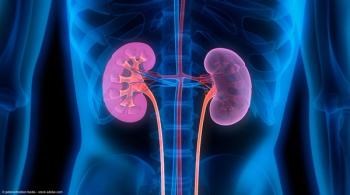
Study supports same-day discharge after artificial urinary sphincter insertion

Outpatient artificial urinary sphincter insertion is likely a viable option based on an analysis of immediate postoperative complications and pain control.
Outpatient management after artificial urinary sphincter insertion (AUS) is a viable treatment approach, based on a retrospective analysis published in the Journal of Urology.
To determine the likelihood that outpatient management would be safe, the investigators analyzed medical records of 163 men who received inpatient AUS insertion, 99% of whom were discharged on the first day following surgery. The authors hypothesized that a review of pain control and immediate postoperative complications in these patients would support the safety of same-day discharge.
The data showed that only 2 patients (1.2%) had immediate postoperative complications, and 8 patients (6%) failed a voiding trial on the first day postsurgery. After leaving the postanesthesia care unit, 94% (n = 154) of patients needed oral narcotic pain medication. These patients used a median of 31.0 ± 22.9 morphine milligram equivalents.
“Immediate postoperative and peridischarge complication rates are around 1% after artificial urinary sphincter insertion, and narcotic requirements following postanesthesia care unit stay are minimal. Outpatient artificial urinary sphincter insertion is likely to be safe, effective and beneficial with regards to patient experience and total costs,” Benjamin M. Dropkin, MD, Department of Urology, Vanderbilt University Medical Center, Nashville, Tennessee, and coauthors wrote.
For their retrospective analysis, the investigators received approval from an institutional review board to review the electronic medical records of men who received AUS insertion (CPT code 53445) between June 2013 and September 2017 by study authors Douglas F. Milam, MD, or Melissa R. Kaufman, MD, PhD, both from the Department of Urology, Vanderbilt University Medical Center. The study had no exclusion criteria.
All 163 men included in the analysis were admitted overnight under 23-hour observational status. Of these patients, 89% (n = 146) were administered antibiotic prophylaxis prior to surgery with gentamicin and vancomycin (both weight based). For the other 17 patients, presurgical regimens were tailored according to baseline factors, such as allergies to specific medications.
The mean patient age was 69.8 years and the mean body mass index was 28.9 ± 5.1 kg/m2. The mean preoperative pad use per day was 5.8 ± 3.5. Fifteen percent of patients were using chronic narcotic pain medication prior to surgery, and 31% had a history of diabetes. Seventy percent of patients had a history of hypertension, 53% were current or former smokers, 85% had prior prostatectomy, and 34% had received radiation to the prostate.
Beyond the 2 patients with postoperative complications prior to discharge, 2 other patients had to return within 48 hours to the emergency department. One of the patients had suspected aspiration pneumonia and had to be admitted to the intensive care unit (Clavien grade IVa), and the other patient had urinary retention requiring catheter placement (Clavien grade I).
According to the study authors, there are more than 3500 artificial urinary sphincters placed in patients each year in the United States.
“The reassuringly low rates of complications in the immediate postoperative setting and within 48 hours of discharge in this study strongly support a same-day surgery protocol for AUS implants,” Dropkin et al wrote in their conclusion.
Reference
Dropkin BM, Dallmer JR, Chisholm LP, et al. Minimal inpatient narcotic requirement and immediate complication profile supports same day discharge following artificial urinary sphincter insertion. J Urol. 2020;7:305-308. https://doi.org/10.1097/UPJ.0000000000000102
Newsletter
Stay current with the latest urology news and practice-changing insights — sign up now for the essential updates every urologist needs.




















